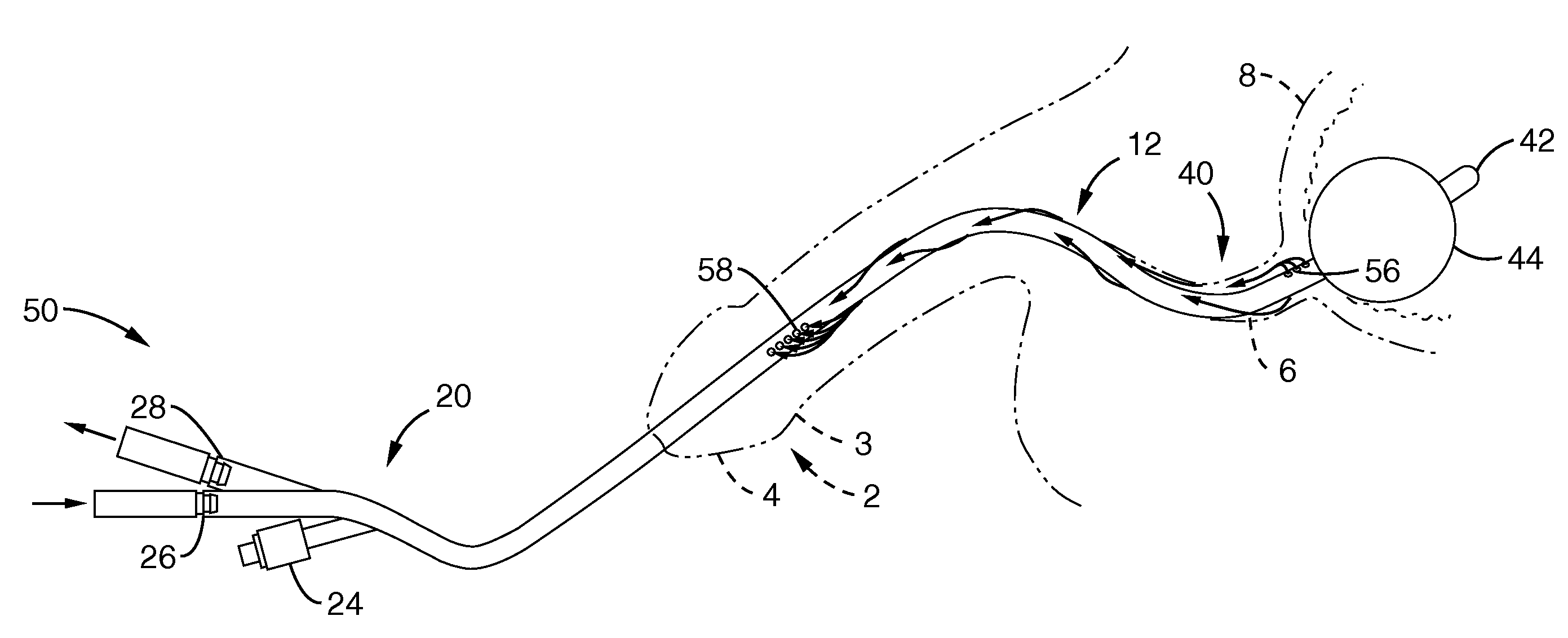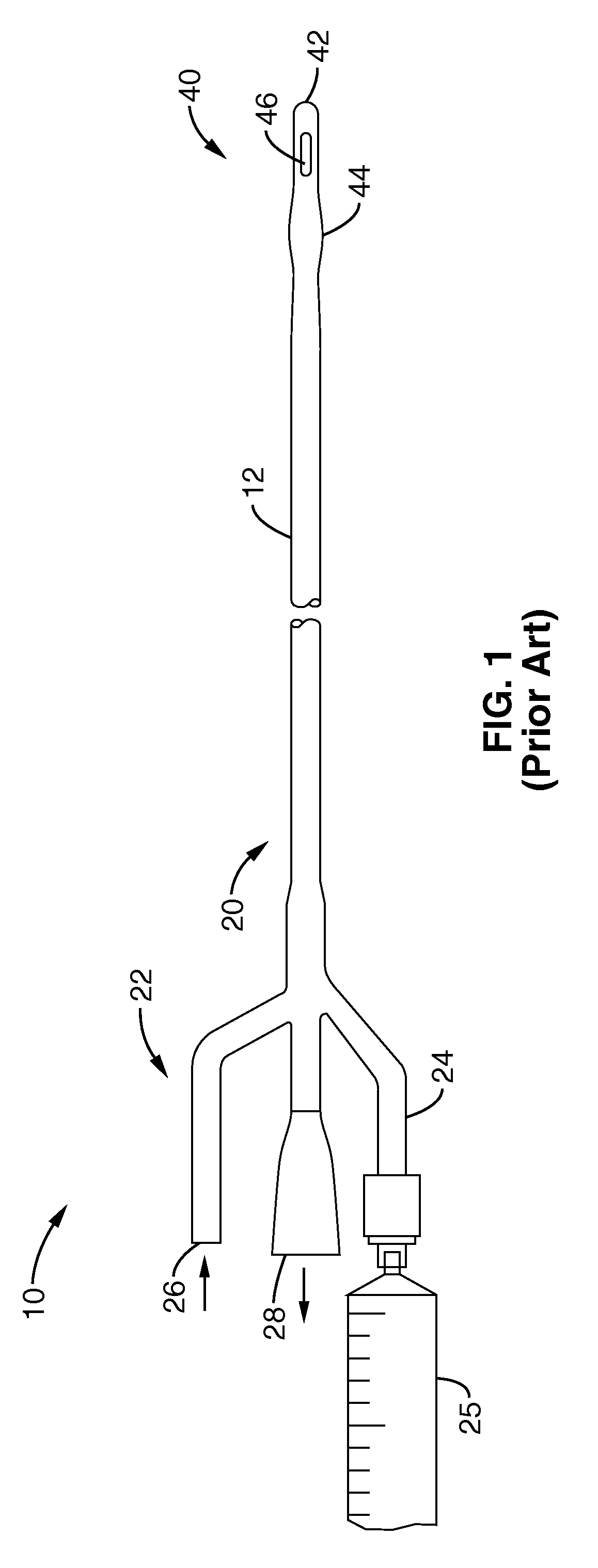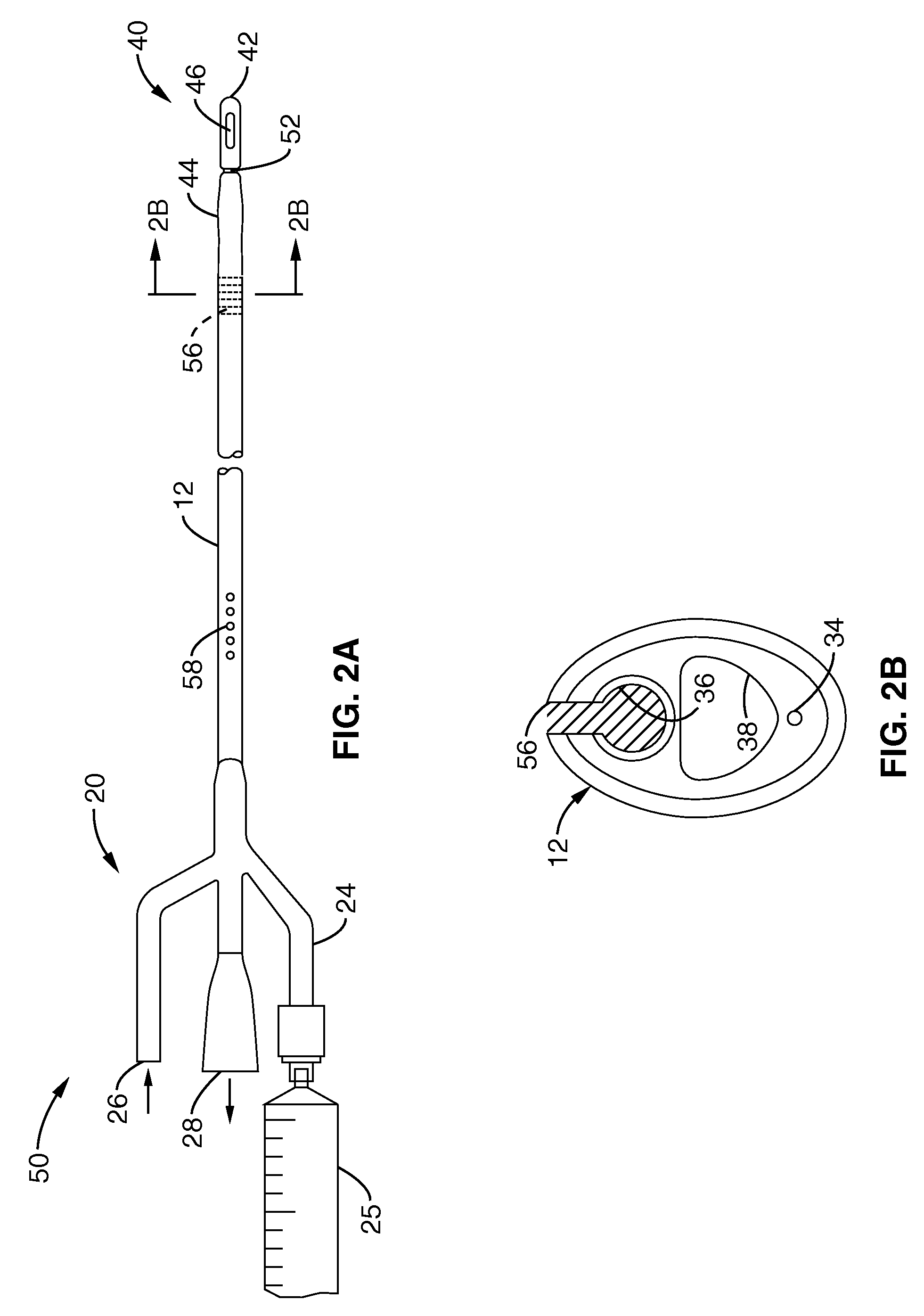System and method for urinary tract cell collection, diagnosis, and chemotherapy
a technology for urinary tract cells and urinary tracts, applied in the field of medical devices, can solve the problems of significant and potentially deadly medical conditions, available treatments carry the risk of recurrence, and still at risk for developing “bladder cancer
- Summary
- Abstract
- Description
- Claims
- Application Information
AI Technical Summary
Benefits of technology
Problems solved by technology
Method used
Image
Examples
Embodiment Construction
[0092]Various aspects, modes, and embodiments of the present invention are further described and variously illustrated as follows.
[0093]By convention, the end furthest inside the patient (furthest from the outer skin surface) has been herein designated the “distal end”, while the “proximal end” of the catheter is the end that remains either outside of the body, or, the working end of the catheter, through-which fluids are irrigated into / out of the catheter. Medical conventions typically refer to proximal as “upstream” and distal as “downstream” when referring to anatomy, such as down the urological tract from “proximal” structures such as the kidney or ureters and “distally” toward the outside world such as via a urethra. For consistency of this disclosure, o the extent catheters devices and methods are herein described in retrograde delivery within such anatomies, “proximal” will hereunder mean outward from the patient and “distal” will hereunder mean further inward or upstream int...
PUM
 Login to View More
Login to View More Abstract
Description
Claims
Application Information
 Login to View More
Login to View More - R&D
- Intellectual Property
- Life Sciences
- Materials
- Tech Scout
- Unparalleled Data Quality
- Higher Quality Content
- 60% Fewer Hallucinations
Browse by: Latest US Patents, China's latest patents, Technical Efficacy Thesaurus, Application Domain, Technology Topic, Popular Technical Reports.
© 2025 PatSnap. All rights reserved.Legal|Privacy policy|Modern Slavery Act Transparency Statement|Sitemap|About US| Contact US: help@patsnap.com



